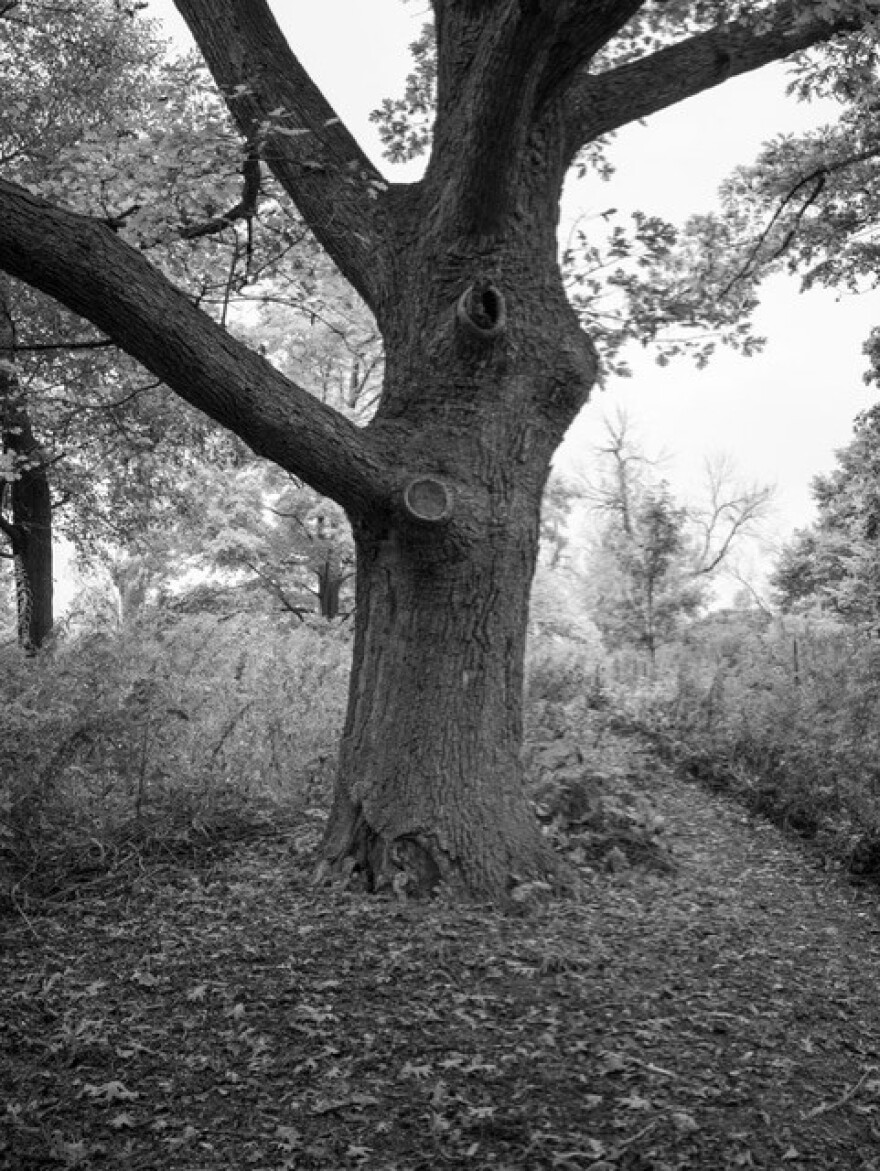Earlier this autumn, before most of the leaves fell, a photographer set up his tripod up in three Milwaukee parks to document some of the trees.
The parks the photographer visited are Lake, Riverside and Washington, and they all have something in common: they were designed by Frederick Law Olmsted.
If Olmsted's name is not familiar, you probably know one of Olmsted’s most famous projects, Central Park in New York City.
Stanley Greenberg, the visiting photographer, has documented trees in as many Olmsted parks as possible. What started as a pandemic pastime has evolved into a major project.
WUWM's Susan Bence met Greenberg in Lake Park as he studied a hickory.
Dressed all in black, Greenberg slowly circled the giant tree once and then again in search of the best angle.
The photographer was delighted the sky was cloudy. “On an overcast day you don’t have to worry about where the sun is,” Greenberg said.

If Greenberg was not sure of the species, he would capture a close up of a leaf with his phone, then another of the tree to record its GPS coordinates. After a few silent clicks of his camera, Greenberg scooped up his equipment and was off to the next specimen.
He whispered "good tree” when viewing what he thought was a silver maple.
“I’d never really photographed trees before, I’ve never really photographed nature before,” Greenberg said.
That doesn’t mean Greenberg doesn’t care about both. Growing up in Brooklyn, Greenberg’s family gravitated to parks.
“We had a bunch of small parks nearby. We’d go to Prospect Park, it was right near where my parents grew up,” he recalled.
After studying art history and earning a master’s degree in public administration, Greenberg worked for a dozen years for New York City’s parks department and city government.
“Then I quit to be a photographer,” Greenberg said.
Now, more than 30 years later, Greenberg has amassed a heap of exhibitions, books, articles and lectures on multiple topics, from infrastructure to time machines.

So why branch into trees?
Greenberg and his wife live in Brooklyn, very close to Prospect Park, which is one of Frederick Law Olmsted’s masterpieces.
Greenberg decided to photograph at Prospect Park when he had some extra time on his hands due to the pandemic.
“I like the idea of photographing the places I love so much because I don’t usually do that. It was something to do that was local when I couldn’t travel and that I was interested in. And then eventually I realized [Olmsted's] 200th birthday is coming up,” Greenberg said.
Olmsted was born April 26, 1822. “I decided this is a good time to do this,” Greenberg said.

Greenberg has photographed trees in 30 parks designed by Olmsted, first within Prospect, and as travel concerns eased, in more far-flung cities such as Louisville, Kentucky and Chicago.

Greenberg chronicled his last three — Lake, Riverside and Washington Parks — during his Milwaukee visit.
“I’ve been to enough Olmsted parks to know what I think will be there, and from what I had read, Lake Park was closest to what Olmsted left it to be, and Riverside Park was not, and Washington Park I hadn’t read that much [about] at all. So [it] was a nice surprise because it has a lot of nice trees,” Greenberg said.
Along the way, a German publisher decided to create a book of Greenberg’s work to be called Olmsted Trees. It will feature 100 black and white photos of about 50 species, as well as essays by contributing writers.
“It looks like we can have the book out by the time of Olmsted’s birthday in April,” Greenberg reports.
He hopes the book helps drive home an environmental message.
“I love the idea of Olmsted saying he was designing parks for 100 years from now, and we’re not really thinking about 100 years from now,” Greenberg said. “We’re not dealing with climate change, and if we don’t, the parks aren’t going to be here.”
Greenberg will return to Milwaukee next April.
A local museum, Villa Terrace, will be staging an exhibition In the Park with Frederick Law Olmsted: A Vision for Milwaukee. Several of Greenberg’s photographs will help tell the story.
Have an environmental question you'd like WUWM's Susan Bence to investigate? Submit below. (If the module isn't appearing, please refresh the page.)
_







